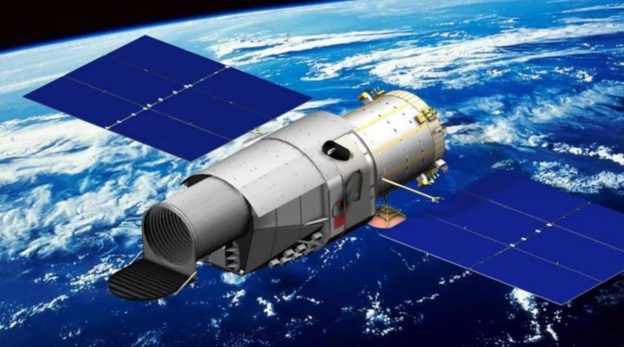The rapid advances in space tech have carved out newer opportunities for many nations as the technologies and space services have become more accessible.
When former US President Donald Trump announced funding for the country’s “Space Force”, there was a collective sigh across the world. Let’s face it; the Space Force didn’t live up to the pomp and promise of Mr. Trump as he had declared space to be the world’s newest “war-fighting domain”. The latest branch of the US military forces has transformed into real military service over the years – a service that primarily oversees satellite operations. When the first of its personnel were deployed in the Middle East (instead of space) to support combat operations that depend on space systems, we understood the true role of a defence division like the Space Force.
Space technologies and data are important for global economic and financial systems. They play a significant role in advancing scientific progress and global climate and natural disaster management. Over the next two decades, the industry is slated to become a trillion-dollar market, and security operations will have a big chunk of this industry.
The rapid advances in space tech have carved out newer opportunities for many nations across the globe as the technologies and space services have become more accessible. This is increasing concerns around security as more countries gain access to space technologies. NATO has acknowledged this possibility and deployed an overarching space policy to monitor the domain.
China’s Growing Clout in Space
Over the years, China has been increasing the number of space launches to increase its presence in the final frontier. Its expenditure of $10.3 billion on the space programme was only behind the US in 2021.
An important landmark came for China when it landed the Chang’e-4 rover successfully on the far side of the Moon, which established the Asian superpower as a leading player in space. The country has only increased its push in the subsequent years into space by increasing its satellite launches, satellite applications, and Earth observation/satellite imagery.
This year, China is looking to top its national space launch record that it set last year. Additionally, it aims to complete a three-module space station with six related missions. Called Tiangong, this Chinese space station will hover 340 miles above the earth. The space station will feature the powerful Xuntian telescope and host commercial operations and foreign astronauts.
What’s interesting is the fact that the Chinese Xuntian telescope that is due for a launch in 2023 will trump the Hubble telescope as the most powerful telescope in space. Positioned in the Tiangong space station, Xuntian will look out to the stars and measure the positions, shapes, and brightness of galaxies of the universe. The telescope will also photograph 40% of the earth’s sky and relay the data to help scientists across the world in their research effort.
Although Xuntian will have a smaller aperture than the Hubble (2.4 metres), it has a view that’s 350 times larger than the latter. The Chinese telescope will also feature modern technology, which is bound to leave behind Hubble (launched in 1990 in a joint effort by NASA and ESA) in many parameters and deliver better results.
“The telescope will conduct frontier scientific research in the universe’s formation and evolution, dark matter and dark energy, exoplanets and solar system objects, and is expected to secure a batch of major innovative breakthroughs,” said Hao Chun, director of the China Manned Space Engineering Office (CMSEO).
These developments from China come at a time when the future of international cooperation with regard to the International Space Station (ISS) remains embroiled in severe turbulence due to the ongoing Russia-Ukraine war.
Today, China counts Pakistan, Laos, Belarus, and Venezuela as its satellite customers. The list will continue to grow longer as China expands its space programme and welcomes more collaboration from nations across the globe. The Western domination of space is bound to decrease as the Chinese presence in space will give more opportunities to other nations.
From Space to Battlefield
Today, satellites have become the source of precise information on movements on earth through imagery or signal interceptions. These satellites tend to transfer a huge amount of data to and from the battlefield. NATO uses this satellite data on battlefields to gain a substantial edge.
Space infrastructures have become crucial for operational capability and defence. So much so that the dependence on modern armed forces has also become their vulnerability. While only the US and Russia were earlier capable of launching satellites into orbit, now there are more countries that are capable of achieving this feat, including China, India, Japan, North Korea, and Iran. The proverbial iron curtain that kept other countries out of space no longer exists due to the recent evolution of space capabilities, especially on the commercial side.
Due to these advancements, countries have a new ongoing race to bolster their space denial weapons (weapon systems that destroy satellites). While the US leads the race, China has some of the most advanced space denial assets, including space orbiting robots (according to the US Department of Defense, 2020).
India, too, as a space faring nation has come far from its initial days when it focused highly on societal and developmental utilities. Today, India’s space programme has evolved like other space-forward countries to include the use of space-related technologies for military operations such as intelligence, surveillance, and reconnaissance. India has also successfully tested its anti-satellite missile (Mission Shakti) in 2019. This puts India in an exclusive group (USA, Russia, and China) of countries which have displayed ASAT capabilities.
It will be interesting to see how the future of the space tech domain unfolds as more countries avail them and become capable of applying them for military and civilian welfare. The tussle to get an edge in the final frontier of space continues.
https://www.financialexpress.com/defence/emerging-technologies-in-space-and-battle-for-the-final-frontier/2528123/





